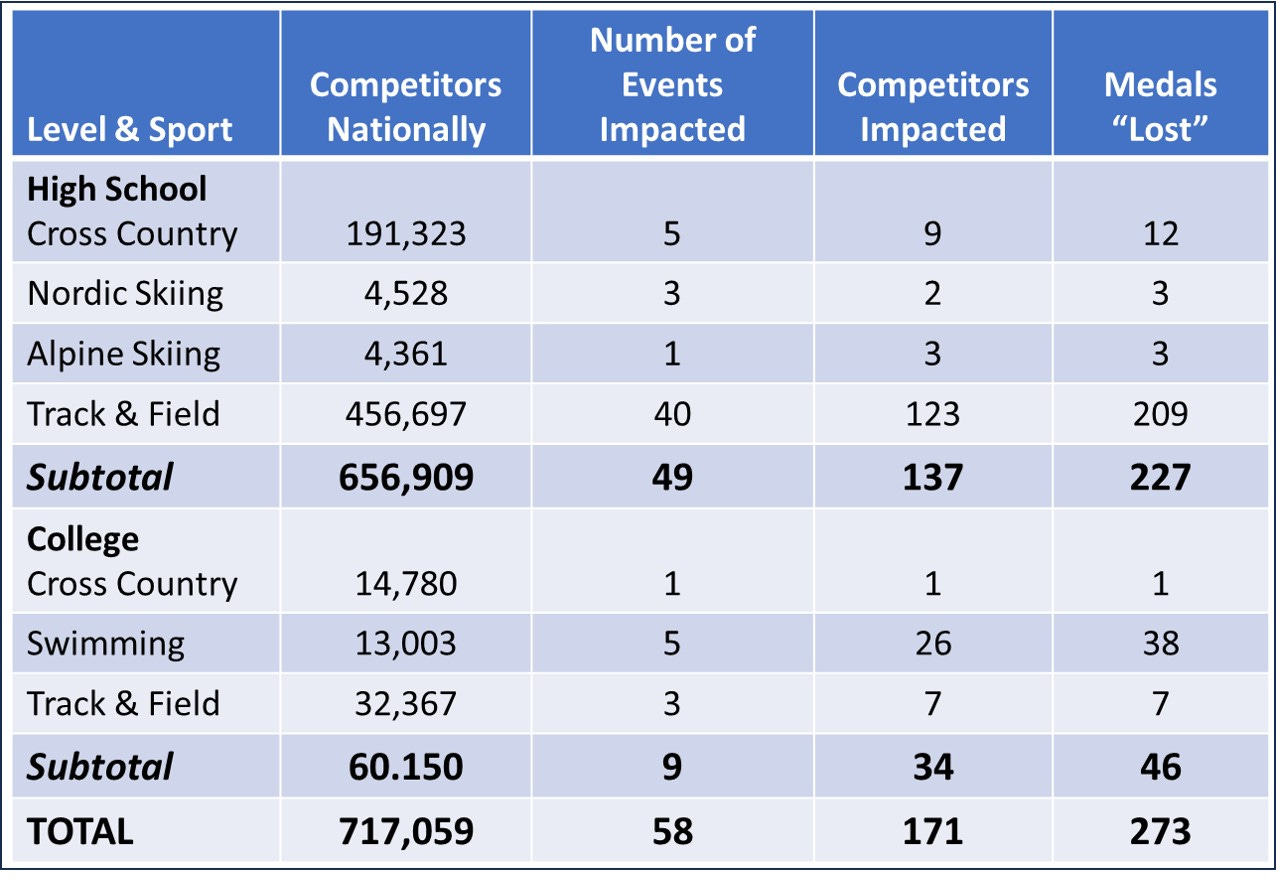The UN's Report on "Violence against women and girls, its causes and consequences"
“Over 600 female athletes in more than 400 competitions have lost more than 890 medals in 29 different sports.”

The most quoted line from the UN’s report touching on the impact of trans-athletes in women’s sports is this,
“Over 600 female athletes in more than 400 competitions have lost more than 890 medals in 29 different sports.”
Take this quote plus the title of the report, “Violence against women and girls, its causes and consequences,” and you could jump to the conclusion that women and girls are getting injured in great numbers by trans-athletes. Remembering that women’s basketball teams at my schools often used men for practice squads, I wanted to read the report to see if any male practice squads injured the teams they were supposed to help. Well, the report was not what I thought it would be.
The primary content in the report is divided into five main sections, 1) descriptions of the types of violence experienced by women and girls in sports, 2) causes of violence against women and girls in sports, 3) perpetrators of violence, 4) participation rates, 5) human rights and 5) recommendations (40 in all). Transgender athletes are only a small part of the report. Most of the report focuses on the treatment of biological women in other countries when they are not playing sports. The full report is attached below. The statement about medals lost to transgender athletes, however, mostly centers on the United States.
Lost Medals
The data on “medal lost” data comes from the website SheWon.org. The site keeps a running total of medals lost by girls and women to trans-athletes at the professional, collegiate, and high school levels. If a trans-athlete finishes first in a competition, the list includes three entries for the women/girls who lost a medal. The second-place athletes lost a “gold,” the third-place athlete lost a” silver,” and the fourth-place finisher lost a “bronze.” The list is based on self-reported data from around the world and includes some citations for verification. It is not comprehensive. The total “lost” medal count on the site is now 1,055 (as of November 6, 2024). Of these medals, 733 (69.5%) involved medals lost in competitions in the United States, and 273 (26%) were in sports sanctioned by the NCAA or tracked by the National Federation of High School Associations. Examples of sports on the list that are not associated with college and high school associations are Irish Dancing, Disc Golf, Poker, Darts, Rock Climbing, and eSports.
Here is the breakdown of medals lost in sports conducted by the NCAA and high schools in the United States:
Injuries to Biological Females
A section in the report on injuries to biological females also referred primarily to American athletes. That section (below) did not include any significant data but rather relied on a few single incidents. The footnotes associated with this section is clipped below the text.
There are no reports of men injuring women during practice sessions, which I suspect are far greater in number than actual competitions.
Summary
The data on lost medals and injuries in this report are not compelling and in my opinion, do not warrant the attention that it received. As a neutral observer on the issue of trans-athletes in women’s and girls’ sports, I’m reticent to suggest arguments for either side. But for the sparse data in this report, I suggest it be left out of the debate. If the data becomes more robust on the SheWon.org website, however, it could become a source worth citing. For now, I would edit the line that was widely quoted to as follows:
“
Over 600One-hundred and seventy-one (171) female college and high school athletes in the U.S., inmore than 40058 competitions have lost more than890273 medals in295 different sports.”




